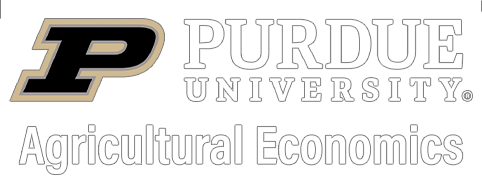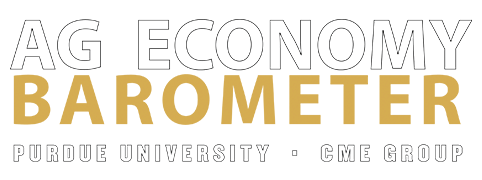June 6, 2017
Using Enterprise Budgets to Compute Crop Breakeven Prices
Enterprise budgets provide an estimate of potential revenue, expenses, and earnings or losses for a specific enterprise. Enterprise budgets are often one of the building blocks to creating a whole-farm plan. They are also extremely useful in computing breakeven prices. This article uses a cash crop farm in Indiana to illustrate the components of an enterprise budget and to compute breakeven prices for corn and soybeans. The format of the enterprise budget presented below closely follows that of the Purdue Crop Cost and Return Guide.
Most enterprise budgets use economic costs rather than cash costs. This means that, in addition to cash costs and depreciation, opportunity costs are included. An opportunity cost represents the income that could have been earned if an input was sold or rented to someone else. Opportunity costs for unpaid family and operator labor, owned machinery, and owned land need to be included in an enterprise budget. Because opportunity costs are included in an enterprise budget, the bottom line figure (i.e., earnings or losses) represents an economic profit or loss. Over a long period of time, due to the fact that all inputs (cash items, depreciation, and opportunity costs) are being paid the market rate, economic profit is zero. If economic profit is positive, input prices will be bid up, similar to what happened to cash rents during the last decade, and economic profit will migrate towards zero. Conversely, if economic profit is negative, input prices will decline, and economic profit will head towards zero or breakeven.
Rotation Corn Budget

Table 1. Enterprise Budget for Rotation Corn on Average Productivity Soil, 2017.
Table 1 presents an enterprise budget for rotation corn on average productivity soil in Indiana for 2017. Trend yield multiplied by the expected harvest price results in a market revenue of $629 per acre. Costs are presented on a per-acre and a per-bushel basis. Both of these figures can be useful when examining a particular cost item. Per-acre costs are typically easier to benchmark (with other farms or using historical information for the same farm) while per-bushel costs are extremely useful in examining the impact on a particular cost item when making a change that impacts yield per acre. Total variable cost is $422 per acre ($2.48 per bushel). Subtracting total variable cost from market revenue and adding government payments yields an expected total contribution margin of $207 per acre. For the enterprise to breakeven, the total contribution margin needs to be at least as large as total overhead cost. For 2017, the total contribution margin for rotation corn is expected to be substantially smaller than total overhead costs, resulting in a loss per acre of $129. Breakeven price is computed by adding total variable cost to total overhead cost, subtracting government payments, and dividing the result by expected yield per acre. Breakeven price for corn is estimated to be $4.46 per bushel.
The breakeven price reported in table 1 is sensitive to changes in yields, prices, and cost estimates. For example, a reduction in land cost of 10% results in a breakeven price of $4.34 or a 2.6% reduction in breakeven price. Breakeven prices also vary by land productivity category. For low and high productivity land, the breakeven prices for corn are estimated to be $4.94 and $4.05 per bushel, respectively.
Rotation Soybean Budget

Table 2. Enterprise Budget for Rotation Soybeans on Average Productivity Soil, 2017.
Table 2 presents an enterprise budget for rotation soybeans on average productivity soil for 2017. Trend yield multiplied by the expected harvest price results in a market revenue of $458 per acre. Variable cost is $232 per acre or $4.46 per bushel. After subtracting total variable cost from market revenue and adding government payments, total contribution margin per acre is $226. Though slightly larger than the expected contribution margin for corn, the contribution margin for soybeans is still not large enough to fully cover overhead costs. Expected loss per acre is $110. Breakeven price for soybeans is estimated to be $10.92 per bushel.
The breakeven price for soybeans reported in table 2 is sensitive to changes in yields, prices, and cost estimates. For soybeans, a 10% reduction in cash rent results in a 3.4% decrease in breakeven price (a drop from $10.92 to $10.55). Notice that the percentage drop in the breakeven price for soybeans resulting from a 10% decline in cash rent is higher than the corresponding decline in the breakeven price for corn. This is due to the fact that overhead costs on a per-bushel basis are relatively more important for soybeans than corn. Total overhead cost as a percentage of total cost for soybeans is 59%. In contrast, for corn this percentage is 44%.
Breakeven prices for soybeans vary by land productivity category. Breakeven soybean prices for low and high productivity land are estimated to be $12.19 and $10.10 per bushel, respectively.
Final Comments
It is important to note that opportunity costs for unpaid family and operator labor, owned machinery, and owned land are included in tables 1 and 2. If we want to compare revenue, costs, and earnings between farms; it is important to include these opportunity costs. Also, if we want to gauge the return to operator time and owned assets, these opportunity costs need to be included in enterprise budgets. The negative earnings or losses per acre depicted in tables 1 and 2 suggest that owned assets are not receiving market rates of return.
As a final note, enterprise budgets can be used to make cropping decisions for the upcoming year. Though both corn and soybeans show losses in tables 1 and 2, the loss per acre for soybeans is less than the loss per acre for corn. The contribution margin for both crops is positive. In the short-run, a farm should continue to produce if it is covering variables costs (i.e., the total contribution margin is positive). In the long-run, all costs (variable and overhead costs) need to be covered. The higher contribution margin for soybeans does not imply that the farm should produce all soybeans. However, it does imply that the farm should consider producing both corn and soybeans.
This article used a cash crop farm in Indiana to illustrate the components of an enterprise budget and to compute breakeven prices for corn and soybeans. Components of the enterprise budgets for corn and soybeans included gross revenue, variable costs, contribution margin, overhead costs, and earnings or losses. Costs should be presented on a per-acre and a per-bushel basis. Using the information in this article, breakeven prices for corn and soybeans for 2017 were projected to be $4.46 and $10.92, respectively.
TAGS:
TEAM LINKS:
RELATED RESOURCES
UPCOMING EVENTS
We are taking a short break, but please plan to join us at one of our future programs that is a little farther in the future.



